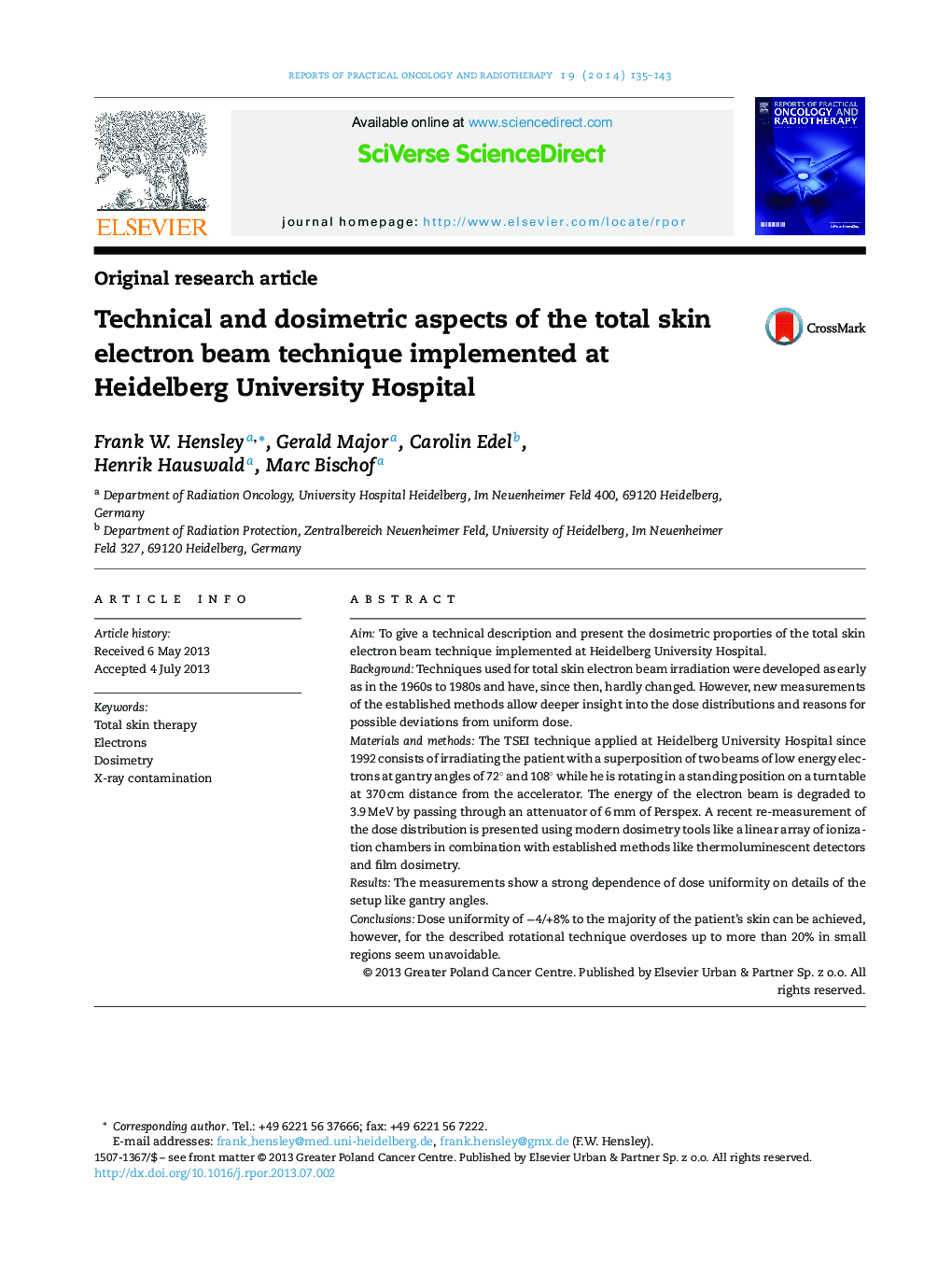| Article ID | Journal | Published Year | Pages | File Type |
|---|---|---|---|---|
| 1855651 | Reports of Practical Oncology & Radiotherapy | 2014 | 9 Pages |
AimTo give a technical description and present the dosimetric proporties of the total skin electron beam technique implemented at Heidelberg University Hospital.BackgroundTechniques used for total skin electron beam irradiation were developed as early as in the 1960s to 1980s and have, since then, hardly changed. However, new measurements of the established methods allow deeper insight into the dose distributions and reasons for possible deviations from uniform dose.Materials and methodsThe TSEI technique applied at Heidelberg University Hospital since 1992 consists of irradiating the patient with a superposition of two beams of low energy electrons at gantry angles of 72° and 108° while he is rotating in a standing position on a turntable at 370 cm distance from the accelerator. The energy of the electron beam is degraded to 3.9 MeV by passing through an attenuator of 6 mm of Perspex. A recent re-measurement of the dose distribution is presented using modern dosimetry tools like a linear array of ionization chambers in combination with established methods like thermoluminescent detectors and film dosimetry.ResultsThe measurements show a strong dependence of dose uniformity on details of the setup like gantry angles.ConclusionsDose uniformity of −4/+8% to the majority of the patient's skin can be achieved, however, for the described rotational technique overdoses up to more than 20% in small regions seem unavoidable.
